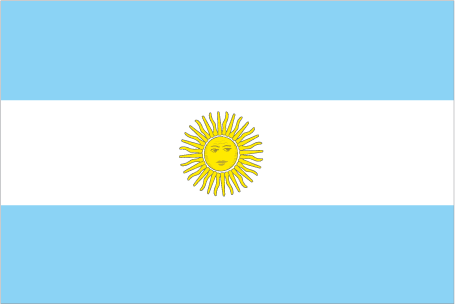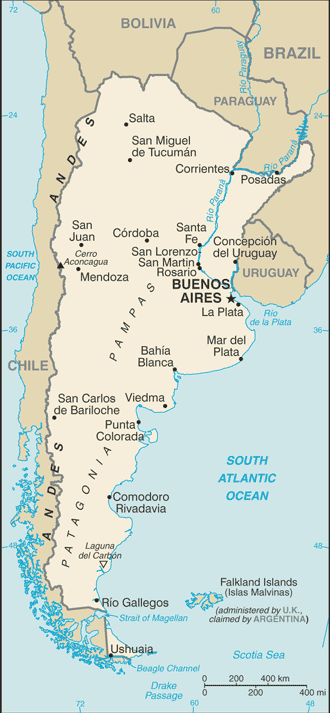Importing from Argentina


Argentina Country Profile
Official Name (Local Language) Republica Argentina
Capital Buenos Aires
Population 43,886,748
Currency Argentine Peso
GDP $541.7 billion
Languages Spanish
Phone Dial In 54
Argentina Exports Profile
Exports ($m USD) 58,384
Number of Exports Products 3,335
Number of Exports Partners 182

Argentina Economic Statistics
Government Website | https://www.argentina.gob.ar/ |
| Sovereign Ratings | https://countryeconomy.com/ratings/argentina |
| Central Bank | Banco Central de la República Argentina |
| Currency USD Exchange Rate | 14.92 |
| Unemployment Rate | 8% |
| Population below poverty line | 32.2% |
| Inflation Rate | 42.8% |
| Prime Lending Rate | 32.3% |
| GDP | $541.7billion |
| GDP Pro Capita (PPP) | $20,200 |
| Currency Name | Argentine Peso |
| Currency Code | ARS |
| World Bank Classification | Upper Middle Income |
| Competitive Industrial Performance | 104/138 |
| Corruption Perceptions Index | 85/180 |
| Ease of Doing Business | 119/190 |
| Enabling Trade Index | 94/136 |
Access trade, receivables and supply chain finance
We assist companies to access trade and receivables finance through our relationships with 270+ banks, funds and alternative finance houses.
Get StartedImporting from Argentina
Argentina is one of the largest economies in Latin America, with a highly skilled workforce and sometimes unstable politics. Argentina’s main exports are food and agricultural products, such as corn, wheat, soybean meal and oil, and beef, as well as vehicles and oil. The main destinations for exports are Brazil, China, Chile, and the US. Argentina is a crucial agricultural producer and exporter, and is the world’s largest exporter of soybean meal (used as animal feed) and oil. It is the source of the vast majority of Brazil’s wheat, cars, and delivery trucks, and exports much of its agricultural products to Africa and Asia.
The Argentinian economy has been unstable in the last few years, with sluggy growth and sky-high inflation despite government efforts. The new president, elected in 2023, has been having some success in bringing down inflation and reducing poverty, but it is likely to be a while yet before the economy becomes predictable again. The controversial policy of dollarisation, likely to be enacted by the new president, could have a stabilising effect and reduce delays in imports and exports, especially those caused by difficulty in accessing foreign currency. Dollarisation is likely to make Argentinian exports more expensive, which could lead to diversification and growth if Argentina manages to keep productivity on par with that of the US, or make exports uncompetitive if the inverse is true.
Chart Showing GDP Growth Compared to rest of world
GDP Composition for Argentina
Agriculture
4%
Sunflower seeds, lemons, soybeans, grapes, corn, tobacco, peanuts, tea, wheat; livestock
Industry
30.2%
Food processing, motor vehicles, consumer durables, textiles, chemicals and petrochemicals, printing, metallurgy, steel
Services
58.4%
Map
Top 5 Export Partners
| Country | Trade | % Partner Share |
| Brazil | 9,307 | 15.94 |
| United States | 4,517 | 7.74 |
| China | 4,325 | 7.41 |
| Chile | 2,621 | 4.49 |
| Vietnam | 2,272 | 3.89 |
Top 5 Exports Products
| Export Product | Number |
| Oil-cake and other solid residues, of soya-bean | 15.6% |
| Maize (excl. seed) | 6.7% |
| Crude soya-bean oil | 6.4% |
| Diesel powered trucks with a GVW not exceeding | 5.6% |
| Soya beans | – |
Speak to our trade finance team
Local Partners
- All Topics
- Argentina Trade Resources
- Export Finance and ECA Topics
- Local Conferences



















